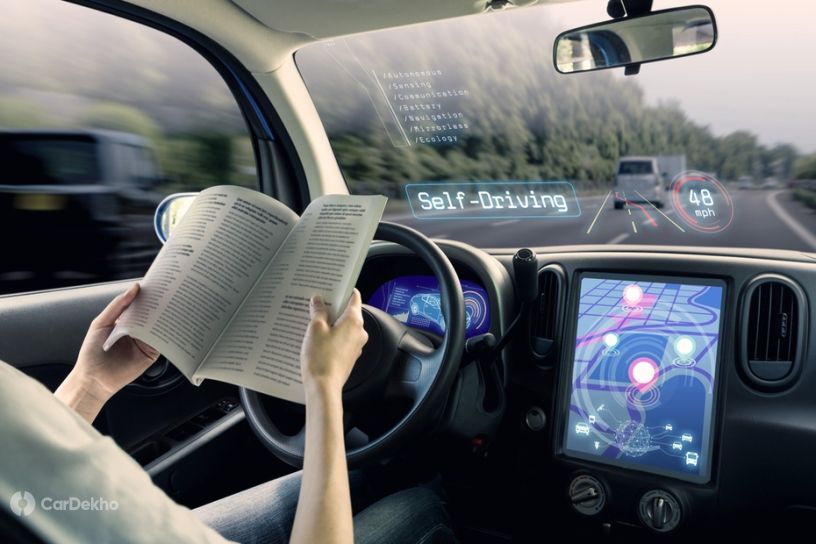What Is ADAS? How Does It Help? And What Are The Challenges It Faces In India?
Published On Nov 07, 2021 11:00 AM By Dhruv
- Write a comment
ADAS or Advanced Driver Assistance Systems are the latest suite of features to make their way onto mass-market cars. Here’s why they matter

The Mahindra XUV700 and MG Astor have popularised ADAS in recent weeks and made it more attainable than ever. It’s the next greatest innovation to make its way onto mass market cars, and has the potential to make Indian roads safer over time. But exactly what is ADAS, what features fall under it and how does it help you?
What is ADAS?

ADAS or Advanced Driver Assistance Systems is a suite of features that give a vehicle certain autonomous capabilities. You will find many manufacturers touting their vehicles being equipped with Level 1 ADAS or Level 2 ADAS. These levels only signify the autonomous capabilities of these vehicles, and the higher the level, the more capable it is. However, there are no officially set benchmarks and the Level 2 ADAS of one carmaker could be similar to Level 1 ADAS of another manufacturer. That is why you should always test drive the car and check out these features in person before making a buying decision.

What is required to make ADAS work?
ADAS makes use of a bunch of cameras and sensors to work. Both scan the area around a vehicle and then feed that information into an onboard computer, which then creates a digital map of the surroundings of the car. It then gives instructions to other computers and controls of the car to take the necessary actions. The quality of ADAS depends on the sophistication of the parts and the code used. Better cameras, sensors and computing abilities will produce better results, and will generally allow a car to scan and understand its surroundings in that much more detail.

ADAS works best with good road infrastructure. It can detect the white lines and other markings on the road, and is often dependent on them to understand its surroundings. ADAS systems can also detect sign boards, especially speed markings, and automatically slow down the car to adhere to the limit. Overall, better road infrastructure means that ADAS will work better for every level of vehicle.
What features fall under ADAS?
ADAS features can be clubbed into three categories: advanced warning, intervention and comfort. We’ve listed the most common ones accordingly in the table below:
| Advance warning |
Intervention |
Comfort |
|
|
|
Advance warning features will alert the driver by the sound of a chime inside the cabin to warn you about an impending danger. If the car’s ADAS detects that the vehicle in front is slowing down, or you are leaving your lane, or there is someone in your blindspot or a car is in your path while reversing, it will sound a chime and even give you a visual alert on the instrument cluster.

If this warning is not heeded, the vehicle moves on to the next step, which is intervening. In case of an imminent collision, the vehicle will automatically apply the brakes. If you are deviating from your lane, the steering wheel gets electrically actuated and it nudges you back into your lane.

Adaptive Cruise Control takes it a step further by adding acceleration along with steering and braking inputs (even from 0 kmph!). You can set the system to a predetermined speed. If it detects a vehicle in front, it will automatically slow down and maintain a set distance. If the car in front speeds up, the system will automatically speed up your car to stay within that set distance from that car. The system can also detect traffic signs such as speed limits, and automatically bring the speed down to the required level.

High Beam Assist is most helpful while driving on the highways. Cars today are getting an array of blindingly bright LED lights that can be controlled individually. With the help of cameras and sensors, the system can detect exactly where the oncoming car is, and switch off the high beam temporarily. High-end cars can switch off the exact LED lights that would blind oncoming traffic. Lane Change Assist is another useful feature. If you tap the indicator stalk with the ADAS system engaged, it will automatically change the lane in the indicated direction, after it makes sure that the adjacent lane is clear of traffic.
Also Read: Mahindra XUV700, MG Astor Are Democratising ADAS!
What are the challenges faced by ADAS in India?
ADAS faces a host of challenges in Indian driving conditions. It needs proper road infrastructure and thus it will not be able to work properly on all roads in India. Most local roads have little to no markings for lane keeping. For now, it will be limited to expressways and well-paved highways, but as the road infrastructure improves, Indian car buyers will be able to extract the most out of ADAS.

Effective ADAS depends on a constant stream of real-time data to learn and improve in order to be usable in all conditions. With so few ADAS-equipped cars running on Indian roads, there isn’t enough data about road conditions, traffic patterns and people’s driving habits coming in to make the necessary improvements. India also has a problem of stray animals wandering onto roads, something which is not that prevalent in more developed countries. As the ADAS computers gather more such data over time, it will be able to make better decisions, thus increasing its effectiveness.

ADAS is also bound to bring up legal issues in terms of assigning accountability. For example, if a vehicle with ADAS fails to brake in time, who will be responsible for the accident? The car’s system or the driver? As of now, vehicle owners are required to stay attentive all the time with their hands on the wheel. Some ADAS-enabled cars also have systems to detect if the driver is complying with those requirements in order to make use of the driver assists.

However, we have come across many videos on the internet where Tesla (whose cars have a highly sophisticated ADAS system that works on developed road networks in North America and some parts of Europe) drivers can be seen engaged in other activities or even sleeping while the car is being driven. These actions are highly illegal of course but are also real-life examples that prove how good the tech already is. In the future, provisions for autonomous capabilities will have to be made in the laws that regulate driving on public roads.
Read More on : Mahindra XUV700 on road price
7 out of 7 found this helpful













